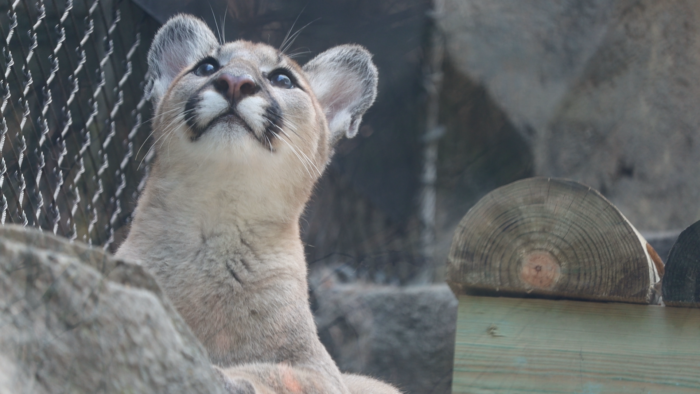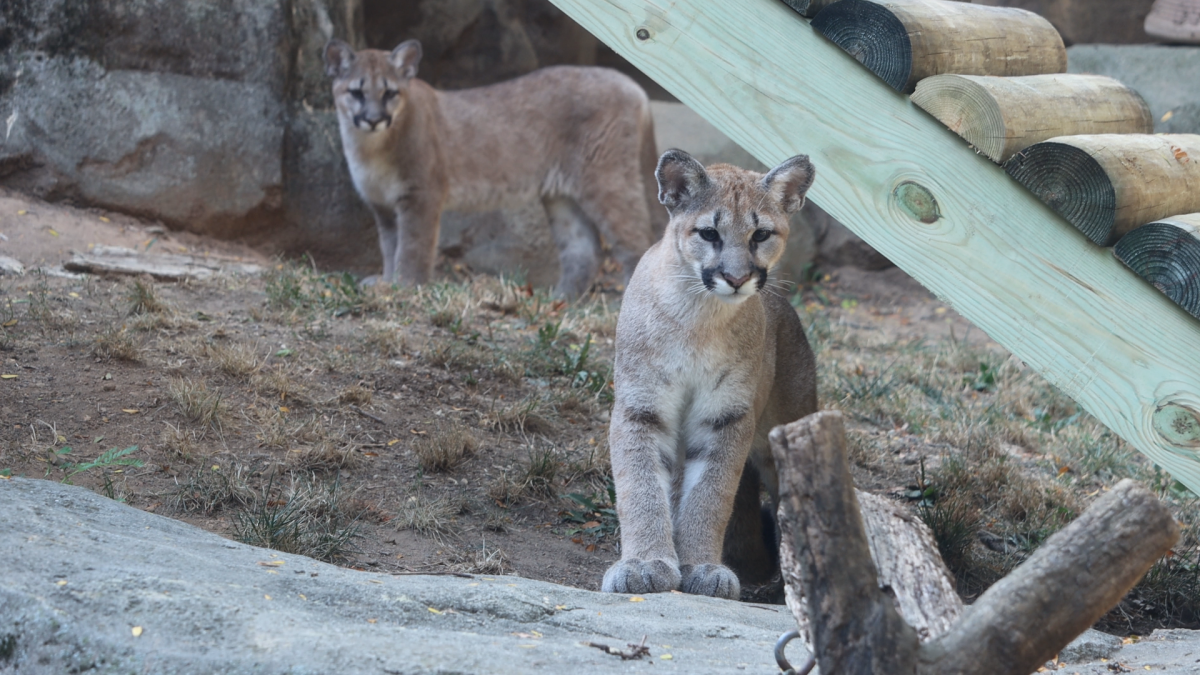The Philadelphia Zoo has extended their four-legged family at Big Cat Falls with two rescued puma cubs — a brother and sister pair—now estimated to be 25 weeks old. In June, Washington State Department of Fish and Wildlife experts rescued the cubs in Kalama and briefly cared for them before flying them to Philadelphia Zoo as their new, permanent home.
This placement is crucial because without the intervention of the Department of Fish and Wildlife, the Association of Zoos and Aquariums and Philadelphia Zoo, they would likely not survive on their own and without their mother.
“Part of our mission at the Zoo is to connect people with animals to inspire action for wildlife and habitats,” said Vice President of Animal Well-Being Rachel Metz in a statement. “We hope that all the guests who meet our puma cubs will learn their story and understand the importance of preserving wild places so that humans and wildlife can thrive together.”
The male cub is named Elbroch in honor of Mark Elbroch, the leading puma researcher for Panthera, a conservation organization devoted to the protection of the world’s 40 species of wild cats. The female is named Olympia, after the state capital of Washington where the cubs were rescued. You can tell the two apart by their size. Elbroch is a little bit bigger than his sister. He’s confident and not afraid to explore and Olympia follows along, looking to her brother for reassurance.
Before their arrival, wildlife veterinarians in Washington determined the cubs were 30-40% underweight for their developmental age. The Zoo’s veterinary team provided customized care that included a specialized dietary plan designed by the Zoo’s animal nutritionist. They also preformed physical exams, blood work, cardiac and abdominal ultrasound exams, and administered necessary vaccines.

There is no specific breeding season for pumas, but most births in North America occur in late winter and early spring with two to four cubs born in a litter. Cubs are completely dependent on their mom when they are born and are covered in spots that fade as they grow, disappearing when they’re about six months old. Cubs typically nurse for three months or more, but can begin eating meat at six weeks.
Pumas are found across North and South America from Alaska to Chile, and have over 200 names because they inhabit the largest geographical region of any other cat in the world. Other names for them include cougar, mountain lion, and panther. They are classified as Least Concern by the International Union for Conservation of Nature (IUCN) but still face threats in the wild including habitat loss and fragmentation, road mortality and disease.
Pumas have the largest hind legs of any feline species, allowing them to jump huge distances while hunting. Adults can leap horizontally more than 20 feet and 18 feet vertically. Pumas can catch prey as large as a moose and as small as a mouse. Their fur ranges in color from a light buff to a dark reddish brown. The back of their ears and tips of their tails are black. Pumas are not considered big cats because they cannot roar. Instead, they have a high-pitched trill vocalization that sounds like a bird.
For updates on the cubs, visit philadelphiazoo.org or follow the Zoo on social.





























